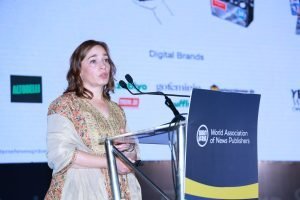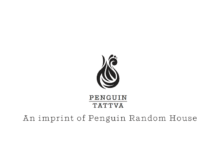Strategies to transform print media, automation to optimize operations, sustainability and carbon footprint, engaging the digital-first generation, shift from legacy printing to new applications, maintaining newspaper plants, advertising and revenue, and distribution challenges were among a host of topics that were debated and discussed at the 32nd Wan-Ifra Indian Printers Summit in Hyderabad.
Keeping in the need of the times when sustainability has become the buzzword of all small and large-scale operations in an era of climate change and environmental consciousness, quite a few sessions in the two-day conference on 23 – 24 September 2024 took a deep dive into eco-friendly print operations, carbon neutrality, GHG reduction and effective energy management.
The summit’s inaugural keynote by Gundula Ullah, chief procurement and sustainability officer of Funke Mediengruppe, Germany, focused on ‘Printing Tomorrow: Transforming Print Media for a Sustainable Future.’ Ullah spoke on integrating sustainable practices into the core of the printing industry, citing examples from the German newspaper and magazine publisher. The road to Net Zero, she explained, will not be possible without the help of suppliers.

of Funke Mediengruppe, Germany,
Among the key measures, according to Ullah, are reducing waste at all office and production sites, the rollout of electro-mobility in the company cars or distribution fleet; expansion of renewable energies in the supply chain; promoting climate-friendly mobility in the supply chain and; CO2-optimized procurement scenarios. A key learning from Funke’s climate pilot, she said, is that the critical lever for emission reduction is the usage of green energy.
A panel discussion focused on the sustainability of newspaper manufacturing from the point of view of the ecological impact of inks, plates, and chemicals used in newspaper manufacturing, and how newspaper printers and suppliers are working to mitigate the impact. Chaired by Snehasis C Roy from Bennett Coleman, the speakers such as BS Shesh of HT Media, Amit Khurana of Technova and Neeraj Mahajan of Lokmat Media shared insights about their purchase patterns, the steps they have taken to monitor sustainable materials in their input materials, the challenges faced, changes adopted for sustainable results in the manufacturing practices.
Kannan V, senior counselor, CII – Godrej GBC, deliberated on the need to calculate GHG footprint, the key benefits and implications of sustainability enhancement in printing facilities, the way to approach GHG reduction and carbon neutrality for printing plants and media houses. A most favorable approach for GHG mitigation would be to avoid activities that cause emissions. Then comes reducing and changing activities and sources to cut down on emissions, he said.
The crux of Muralidharan K’s – associate general manager, Bennett Coleman Hyderabad – presentation was energy management as a strategic tool for sustainability. He said print media’s response to the climate challenge would be to create a strategy that acknowledges the reality faced while working to slow the pace of global warming and simultaneously boost their competitive advantage. In this path, energy management, as a strategy, can help organizations in energizing the transition toward a sustainable future. BCCL’s initiatives to adapt to a warmer world include reducing the fixed component of variable load; right-sizing & energy-efficient equipment, transition to renewable energy, etc., he said.
Automation and maintenance

Pradyumna Mitra, general manager – engineering, ABP, explained how adapting to changing consumer preferences and leveraging new technologies is crucial for the survival and growth of the newspaper printing industry, Wan-Ifra reported. A shift towards automation in newspaper production, Mitra said, is crucial for survival as increased printing costs, higher newsprint prices, logistical challenges and negative growth in print revenue have made it clear that traditional methods are no longer sustainable.
There are possibilities of automation in energy management, cooling, waste paper management, spare parts inventory control, predictive maintenance with IOT Sensors, news roll handling, etc., he said and explained how the ABP group, publisher of Anandabazar Patrika and The Telegraph, is moving toward automation, particularly in the prepress segment.
The group uses tools such as Pro Image OnColor plugin that enables editorial teams to process images faster in an automated mode without human intervention; the AI-powered Retouch4Me plugin in Adobe Photoshop to automate the photo-editing process; Adobe Generative AI to automate image editing tasks such as removing unwanted objects and adjusting exposures in real-time.
Beyond prepress, ABP has leveraged automation in production and press operations. Automation of advertisement file processing, which ABP implemented about a year and a half ago using OneVision Asura pre-flight software, has allowed ABP to manage a high volume of ads efficiently.
Among other presentations, Surendran D, co-founder, Maxybyte, spoke on an unconventional maintenance approach for newspaper printing plants, the new developments in approaching plant Maintenance as Service (MAS), and how technology advancements and integration support optimizing the machinery to keep them up and running efficiently.
Engage digital-first generations
In an interesting presentation, Rabe Iyer, chief media officer of Omnicom Media Group, India, said the future of print will depend on its ability to engage a new, increasingly digital-first audience.
Wan-Ifra’s Aultrin Vijay reported how Iyer discussed the challenges and opportunities facing print in India due to changing consumer behaviors and digital disruptions and considered potential paths forward during the conference’s closing keynote address. Iyer outlined the importance of understanding younger generations’ preferences and how digital platforms reshape the media landscape.
India’s print industry faces challenges such as changing consumption habits, digital disruption, print’s shrinking influence, competition with digital platforms etc.
Despite the uphill road ahead, he identified opportunities for the print sector such as the growth of regional publications, particularly in Tier 2 and Tier 3 cities, and the need to go more local; the importance of measuring print’s contribution to business outcomes; appealing to loyal readers willing to pay for credible news and slightly increasing cover prices; collecting first-party data to offer personalized content; a shift toward more digestible news formats; and collaborations with digital platforms and journalists.
In other sessions, a panel featuring GenNext leaders from Indian news media conglomerates discussed the role of news media in the GenAI world. Sowbhagyalakshmi Tilak, director of The Printers Mysore, Brihathi Cherukuri, director of ETV Bharat, Janhavi Pawar, director of Sakal Media, and Gaurav Sanghi, executive director of AGA Publications participated in the discussion.
Then there were discussions on ‘Distribution of newspapers: Challenges and best practices in managing the last mile delivery and winning readers’, ‘Print+ ideas for the future of print advertising’, ‘Enhancing newspaper print production efficiency by better management of direct variable costs’, and ‘current issues in the newsprint market, such as supply chain disruptions and environmental regulations, along with price trends and future projections’.
The Summit featured two parallel tracks – the printing summit and the advertising summit. The advertising track explored innovative strategies and the power of print media in a digital world. Engaging panels discussed the role of storytelling in advertising and how brands can connect with readers to create impactful campaigns. The session on AI’s role in enhancing audience engagement was particularly well-received.
During the Summit, Wan-Ifra’s International Color Quality Club (ICQC) announced 39 new members for 2024-2026, recognizing their exceptional and consistent color printing quality. This membership highlighted the achievements of publications that have adhered to international printing standards over an extended period.


















